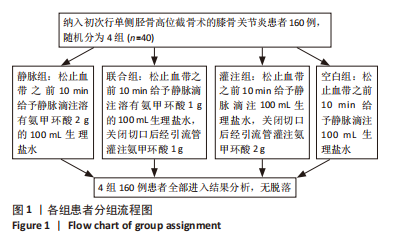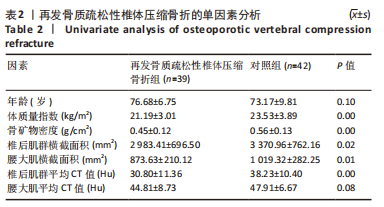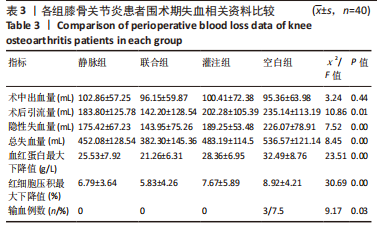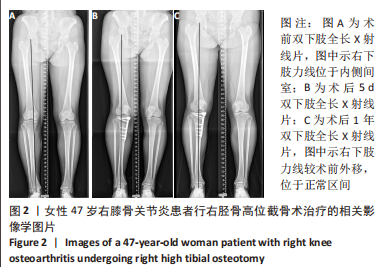[1] LIU X, CHEN Z, GAO Y, et al. High Tibial Osteotomy: Review of Techniques and Biomechanics. J Healthc Eng. 2019;2019:8363128.
[2] LUO W, FU X, HUANG JM, et al. Efficacy and safety of intravenous combined with topical administration of tranexamic acid in reducing blood loss in opening wedge high tibial osteotomy procedure: A retrospective case-control study. Acta Orthop Traumatol Turc. 2022;56(2):100-104.
[3] KIM KI, KIM JH, LEE SH, et al. Mid- to Long-Term Outcomes After Medial Open-Wedge High Tibial Osteotomy in Patients With Radiological Kissing Lesion. Orthop J Sports Med. 2022;10(7):23259671221101875.
[4] KIM KI, KIM HJ, KIM GB, et al. Tranexamic acid is effective for blood management in open-wedge high tibial osteotomy. Orthop Traumatol Surg Res. 2018;104(7):1003-1007.
[5] KIM MS, KOH IJ, SUNG YG, et al. Intravenous Tranexamic Acid Has Benefit for Reducing Blood Loss after Open-Wedge High Tibial Osteotomy: A Randomized Controlled Trial. J Clin Med. 2021;10(15):3272.
[6] MA J, LU H, CHEN X, et al. The efficacy and safety of tranexamic acid in high tibial osteotomy: a systematic review and meta-analysis. J Orthop Surg Res. 2021;16(1):373.
[7] PORTER SB, WHITE LJ, OSAGIEDE O, et al. Tranexamic Acid Administration Is Not Associated With an Increase in Complications in High-Risk Patients Undergoing Primary Total Knee or Total Hip Arthroplasty: A Retrospective Case-Control Study of 38,220 Patients. J Arthroplasty. 2020;35(1):45-51.e3.
[8] POERAN J, CHAN JJ, ZUBIZARRETA N, et al. Safety of Tranexamic Acid in Hip and Knee Arthroplasty in High-risk Patients. Anesthesiology. 2021;135(1):57-68.
[9] FILLINGHAM YA, RAMKUMAR DB, JEVSEVAR DS, et al. The Efficacy of Tranexamic Acid in Total Knee Arthroplasty: A Network Meta-Analysis. J Arthroplasty. 2018; 33(10):3090-3098.e1.
[10] NADLER SB, HIDALGO JH, BLOCH T. Prediction of blood volume in normal human adults. Surgery. 1962;51(2):224-232.
[11] GROSS JB. Estimating allowable blood loss: corrected for dilution. Anesthesiology. 1983;58(3):277-280.
[12] SUH DW, KYUNG BS, HAN SB, et al. Efficacy of Tranexamic Acid for Hemostasis in Patients Undergoing High Tibial Osteotomy. J Knee Surg. 2018;31(1):50-55.
[13] MAGNANELLI S, SCREPIS D, DI BENEDETTO P, et al. Open-Wedge High Tibial Osteotomy Associated With Lipogems® Intra-Articular Injection For The Treatment Of Varus Knee Osteoarthritis - Retrospective Study. Acta Biomed. 2020;91(14-S):e2020022.
[14] SASAKI A, SUGITA T, ITAYA N, et al. A Right Angle Guide for Distal Tuberosity Osteotomy With Medial Open Wedge High Tibial Osteotomy for Varus Knee Osteoarthritis. Arthrosc Tech. 2021;10(4):e1007-e1016.
[15] 李强.全膝置换失血量影响因素分析及应用氨甲环酸的相关研究[D].广州:南方医科大学,2018.
[16] NG W, JERATH A, WĄSOWICZ M. Tranexamic acid: a clinical review. Anaesthesiol Intensive Ther. 2015;47(4):339-350.
[17] 黄晓,石伟发,尹东,等.冷疗联合氨甲环酸应用对全膝关节置换术后局部反应的影响[J].中国矫形外科杂志,2020,28(13):1162-1165.
[18] SHICHMAN I, SHAKED O, ASHKENAZI I, et al. Tranexamic acid in non-elective primary total hip arthroplasty. Injury. 2021;52(6):1544-1548.
[19] 周宗科,黄泽宇,杨惠林,等.中国骨科手术加速康复围手术期氨甲环酸与抗凝血药应用的专家共识[J].中华骨与关节外科杂志,2019,12(2): 81-88.
[20] CHEN DS, ZHU JW, WANG TF, et al. Tranexamic Acid Is Beneficial to Patients Undergoing Open-Wedge High Tibial Osteotomy. Biomed Res Int. 2020; 2020:2514207.
[21] STEINHAUS ME, BUKSBAUM J, EISENMAN A, et al. Tranexamic Acid Reduces Postoperative Blood Loss in Distal Femoral Osteotomy. J Knee Surg. 2020; 33(5):440-444.
[22] YAO RZ, GAO WQ, WANG BW, et al. Efficacy and Safety of Tranexamic Acid in Reducing Blood Loss of Lower Extremity Osteotomy in Peri-acetabulum and High Tibia: A Systematic Review and Meta-analysis. Orthop Surg. 2019; 11(4):545-551.
[23] BIAN J, DENG B, WANG Z, et al. Comparison of topical and intravenous Tranexamic acid for high tibial osteotomy: A retrospective study. Medicine (Baltimore). 2021;100(32):e26884.
[24] PALANISAMY JV, DAS S, MOON KH, et al. Intravenous Tranexamic Acid Reduces Postoperative Blood Loss After High Tibial Osteotomy. Clin Orthop Relat Res. 2018;476(11):2148-2154.
[25] LI S, YANG J, WATSON C, et al. Drainage relieves pain without increasing post-operative blood loss in high tibial osteotomy: a prospective randomized controlled study. Int Orthop. 2020;44(6):1037-1043.
[26] LI S, LU Q, GUO X, et al. Intravenous Combined with Topical Tranexamic Acid Administration Has No Additional Benefits Compared with Intravenous Administration Alone in High Tibial Osteotomy: A Retrospective Case-Control Study. Orthop Surg. 2020;12(2):515-523.
[27] MESHRAM P, PALANISAMY JV, SEO JY, et al. Combined Intravenous and Intraarticular Tranexamic Acid Does Not Offer Additional Benefit Compared with Intraarticular Use Alone in Bilateral TKA: A Randomized Controlled Trial. Clin Orthop Relat Res. 2020;478(1):45-54.
[28] YUE C, PEI F, YANG P, et al. Effect of Topical Tranexamic Acid in Reducing Bleeding and Transfusions in TKA. Orthopedics. 2015;38(5):315-324.
[29] WANG L, ZHANG Z, XIONG W, et al. Impact of tourniquet on short-term outcomes in opening wedge high tibial osteotomy with modern tranexamic acid protocols: a retrospective cohort study. BMC Musculoskelet Disord. 2021;22(1):931.
|







